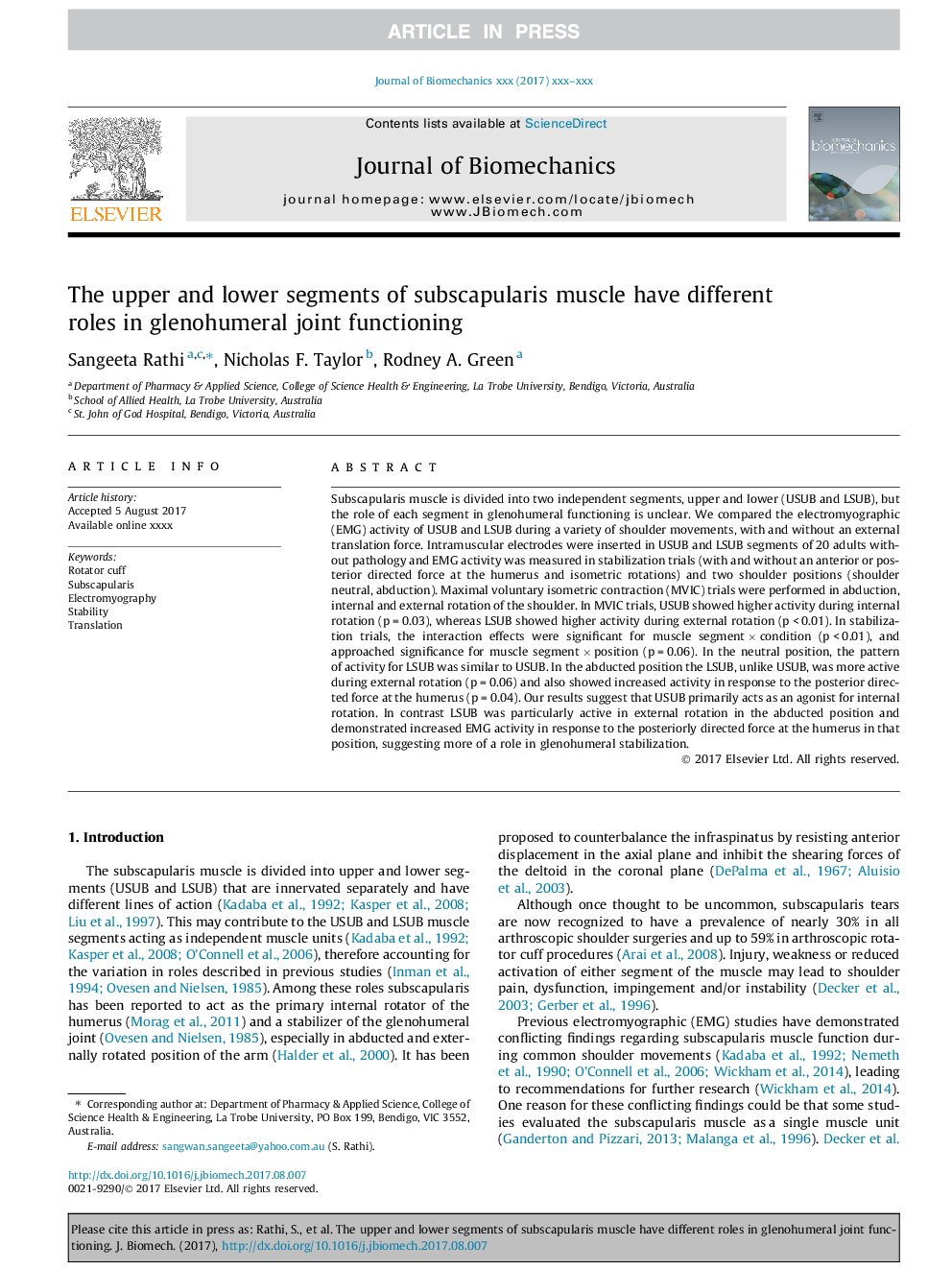| Article ID | Journal | Published Year | Pages | File Type |
|---|---|---|---|---|
| 7237156 | Journal of Biomechanics | 2017 | 6 Pages |
Abstract
Subscapularis muscle is divided into two independent segments, upper and lower (USUB and LSUB), but the role of each segment in glenohumeral functioning is unclear. We compared the electromyographic (EMG) activity of USUB and LSUB during a variety of shoulder movements, with and without an external translation force. Intramuscular electrodes were inserted in USUB and LSUB segments of 20 adults without pathology and EMG activity was measured in stabilization trials (with and without an anterior or posterior directed force at the humerus and isometric rotations) and two shoulder positions (shoulder neutral, abduction). Maximal voluntary isometric contraction (MVIC) trials were performed in abduction, internal and external rotation of the shoulder. In MVIC trials, USUB showed higher activity during internal rotation (p = 0.03), whereas LSUB showed higher activity during external rotation (p < 0.01). In stabilization trials, the interaction effects were significant for muscle segment Ã condition (p < 0.01), and approached significance for muscle segment Ã position (p = 0.06). In the neutral position, the pattern of activity for LSUB was similar to USUB. In the abducted position the LSUB, unlike USUB, was more active during external rotation (p = 0.06) and also showed increased activity in response to the posterior directed force at the humerus (p = 0.04). Our results suggest that USUB primarily acts as an agonist for internal rotation. In contrast LSUB was particularly active in external rotation in the abducted position and demonstrated increased EMG activity in response to the posteriorly directed force at the humerus in that position, suggesting more of a role in glenohumeral stabilization.
Related Topics
Physical Sciences and Engineering
Engineering
Biomedical Engineering
Authors
Sangeeta Rathi, Nicholas F. Taylor, Rodney A. Green,
